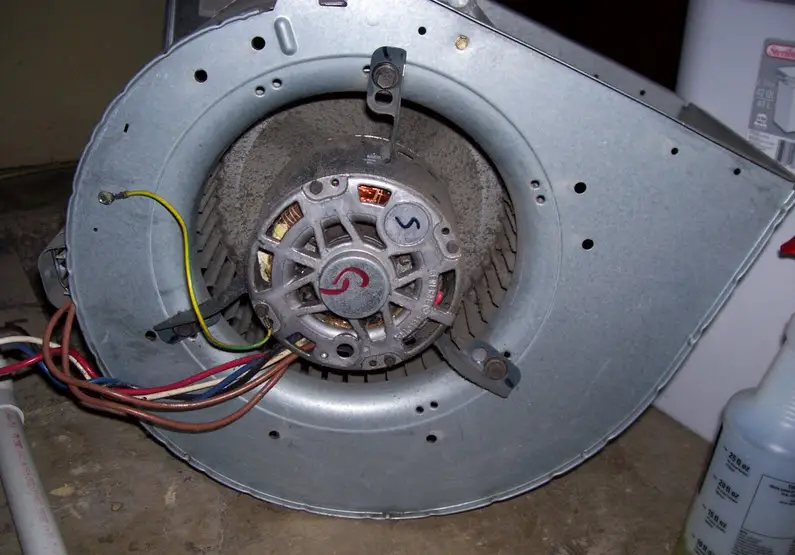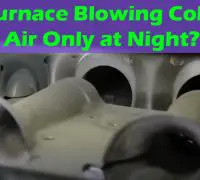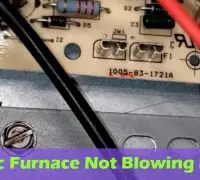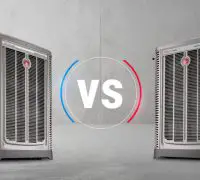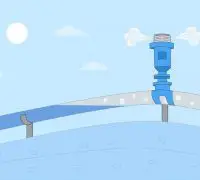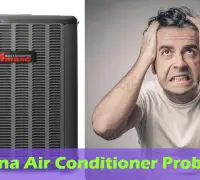The last thing you want in the middle of a winter night is to realize that your house is cold. You hear the furnace running, but you notice that it’s not blowing hot air, but cold air instead. Obviously, a furnace blowing cold air when it’s supposed to blow hot air is a problem that you cannot postpone, especially in winter.
Several problems are causing the furnace to blow cold and not hot air; some will come with easy fixes, whereas others will require professional attention.
Page Table of Contents
How to identify the cause of your furnace blowing cold air?
Even if you’re not going to fix the furnace, you may at least run a little investigation to make an idea about the possible cause. When you have a probable cause for the problem, the HVAC technician will know what to bring and prepare for servicing the furnace.
Most homeowners don’t know much about furnaces, but they should learn to be meticulous when troubleshooting the furnace. It would help if you always stuck to recommendations about troubleshooting; it’s the least you can do before the technician gets to your house.
Take a look at the thermostat setting.
You should see if the furnace is blowing cold air and if the fan remains on. Examining the thermostat is the first step to take even by the professionals when the furnace is blowing cold air.
When the thermostat fan setting is set to on, the furnace blower will keep running even if it’s not pushing hot air inside your house. You feel the cold air from the fan blowing because the fan never stops running.
It’s not complicated to address the problems. You have to flip the fan switch from “on” to “auto.” The auto setting will notify the furnace to blow warm air inside the house whenever it is on.
The furnace has overheated.
Another possible cause for cold air coming out of your furnace is furnace overheating. The air filter could be dirty, and replacing the filter will solve the problem. A dirty filter blocks the airflow, making the furnace work harder for heating the house. Eventually, the furnace will overheat, and you will deal with much more complicated problems.
Constant overheating of the furnace is a serious matter, and it may damage the heat exchanger for good. When the issue gets to the heat exchanger, you will need to replace the heat exchanger. Not only that, replacing the heat exchanger is a job for the HVAC technician, but it will cost you more than replacing the air filter every time it’s dirty.
Keep in mind that heat exchangers make the “heart” of your heating systems, and they should last for more than a decade. It’s impossible to repair a heat exchanger, and to replace it before its time is something you may avoid.
The pilot light is out.
You will have to examine the pilot light and relight it if it’s out. Your furnace typically has instructions on it about how to light the pilot light. If you don’t find it, go to the manual of the furnace.
How to check the ignitor
Specific sequences have to happen for proper operation of your furnace, and paying attention if everything happens correctly helps you identify the issue’s cause.
When you want to observe if the ignitor is glowing, you need to examine the operation sequence. Time delay is possible, so wait for a bit. The furnace comes with a door switch that stops power if the door panel is off.
You should turn the thermostat to request heat; removing the panel will interrupt the furnace’s power, so you should pay attention next. The inducer motor comes on first; if there’s enough exhaust air pressure to collect, the vent switch closes, and the signal goes to the next switch, informing the board to attempt and ignite. The igniter should spark or glow after the gas valve is opening. It’s only now when the ignitor should glow; if it’s not, you may use a stick lightly to see if the board will proceed to emergency ignition. What happens at this moment will decide for future actions.
You may have to complete other actions as well:
The gas valve switch
When the pilot doesn’t light, you should see if the gas flows into the furnace. The gas valve switch should be in the “on” position (parallel/in line with the gas supply pipe). When the switch is on, examine the pilot light; it could be dirty and require cleaning. Once you’ve clean it, the pilot should light.
The thermocouple
When the pilot lights, but it’s not able to remain lit, a thermocouple problem could be the cause. The thermocouple is the copper rod that the pilot flame hits. You will have to adjust or replace the thermocouple.
As you can suspect, these actions could be more challenging to address by regular customers, as professional equipment, skills, and knowledge are necessary. Thermocouples are found in typical hardware stores, and replacement is effortless. However, if you don’t even know how to remove the current thermocouple, it’s wiser to call the technician.
Not enough gas
If the furnace’s gas supply is cut off, the furnace won’t have the necessary gas for providing hot air inside the house. The furnace may also lockdown for safety reasons.
Dirty flame sensor
When the flame sensor is dirty, the gas burner isn’t able to remain lit. Therefore, the furnace will repeat cycling on/off.
Broken ducts
Even if your furnace blows warm air, the ducts have holes, allowing cold air to combine with the warm air. You will feel cold air circulating in the house, but it’s not your furnace the problem, but the broken ducts. Unless you’re a certified plumber, you will need to call the professionals for further investigation.
Clogged condensate drain lines
High efficiency (lp9c models have a 98% AFUE rating) furnaces are excellent for accurate performance and energy efficiency. When the drain lines are clogged, the burner won’t light, making the furnace blow cold air.
Incorrect sized furnace
Unlike many other things in life, size matters when it comes to your furnace. If the furnace has the wrong size for the house, it will blow cold air inside. A furnace that is too small for your household won’t be able to warm the entire home. Simultaneously, the furnace shouldn’t be too big for your house either; it will reach the set temperature on the thermostat too fast, cycling on and off continuously. Eventually, your home won’t get warm, but the utility bill will increase still.
It’s not easy to move to another house matching the size of your furnace; who would do that, anyway? You will need to purchase another furnace but consult an HVAC technician first. You want to get the proper size for your furnace this time.
